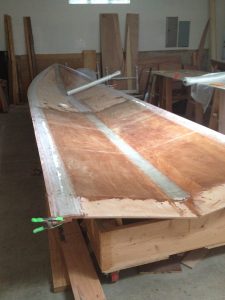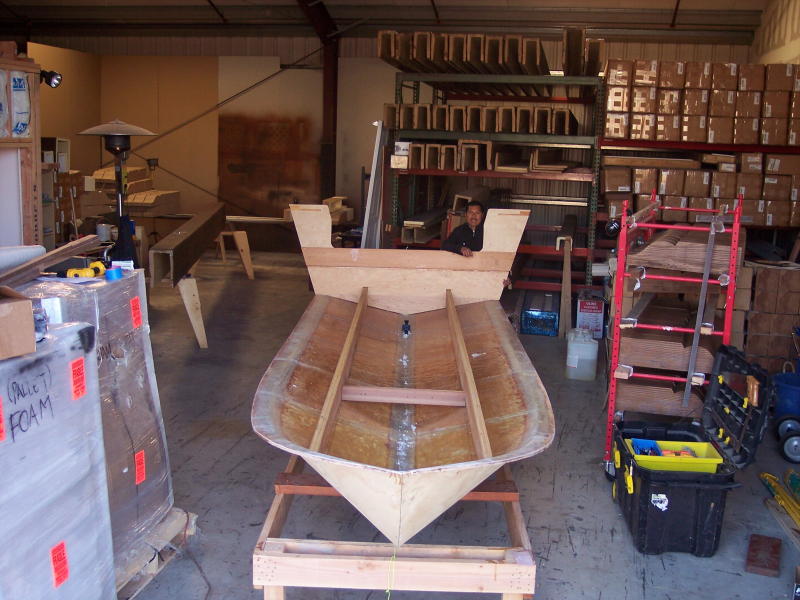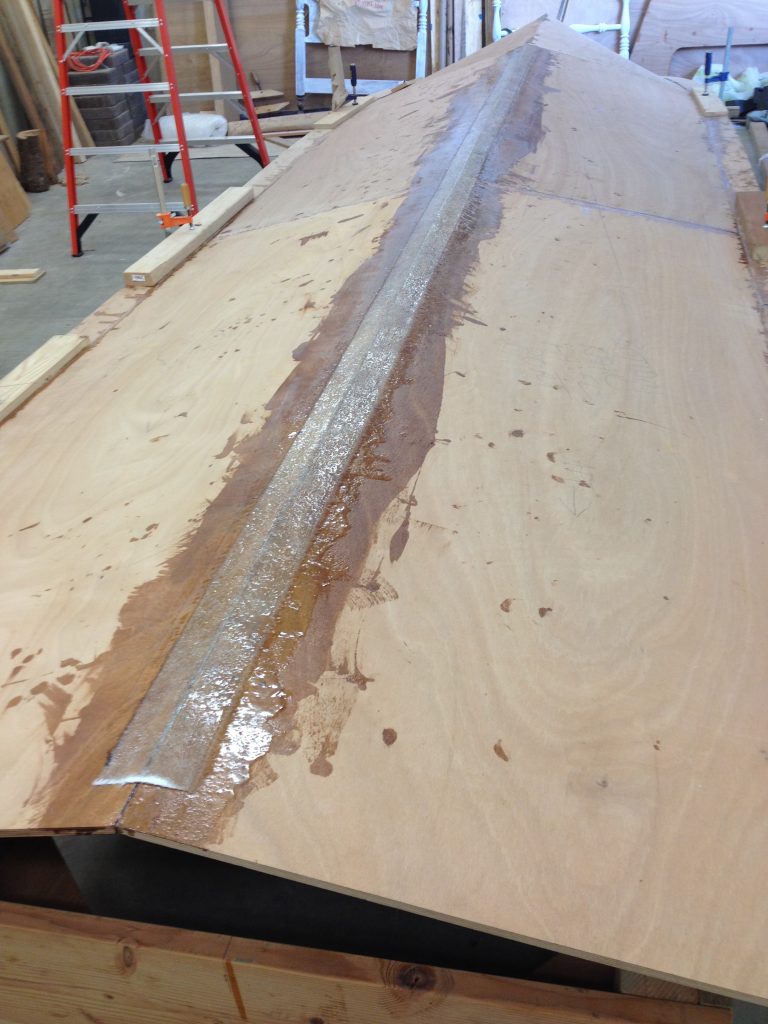With the chine shelves attached, and the fairbody seam taped, I’m ready to apply fiber glass cloth (10 oz) to the whole inside of the bottom. As with all application of glass in epoxy work, the wood is first soaked with epoxy, then the cloth is laid down and we add more epoxy as needed to saturate the cloth. For this step, we have 38″ wide 10 oz cloth. Because of the width, the cloth is rolled out cross-wise, overlapping each other by an inch. The hardest part is getting the cloth to lie flat in the complex curves of the bow. This accomplished by cutting the cloth so you can have what seamstresses call darts.


Once the epoxy has cured to the point that it is no longer tacky, I scrape the seams, the drips and any other bumps that keep it from being smooth. Scraping at this stage saves a great deal of sanding later — something I am often reminded of when sanding later.
As a teaser for what comes ahead and to help you understand how things fit together, I’ve included a photo below (Stolen from another’s web site. Again, if the owner has a problem with this please msg me–Larspa, on the forum.)
 Thoughtfully, this builder has placed key parts to verify the fit, etc. Do doubt you can see the transom at the far end. The two long planks are the stringers. And, this is what they look like before the sides are put on and the sole (floor) is installed.
Thoughtfully, this builder has placed key parts to verify the fit, etc. Do doubt you can see the transom at the far end. The two long planks are the stringers. And, this is what they look like before the sides are put on and the sole (floor) is installed.
Although the epoxy initially sets up within a day or so, it is not completely cured, i.e. reached full strength, for 72 hours. Once all is cured, the bottom is braced with 2×4’s across the hull and turned over to complete the taping of seams on what will be the outside of the hull.

Taping the fairbody or keel is just like the inside, but without the thick fillet. At this point the seam although touching is not particularly tight, so some epoxy is painted into whatever space there is prior to laying down the glass tape.
 Next we set up the building frame for the next stage. From here on, we finish building the hull upside down.
Next we set up the building frame for the next stage. From here on, we finish building the hull upside down.